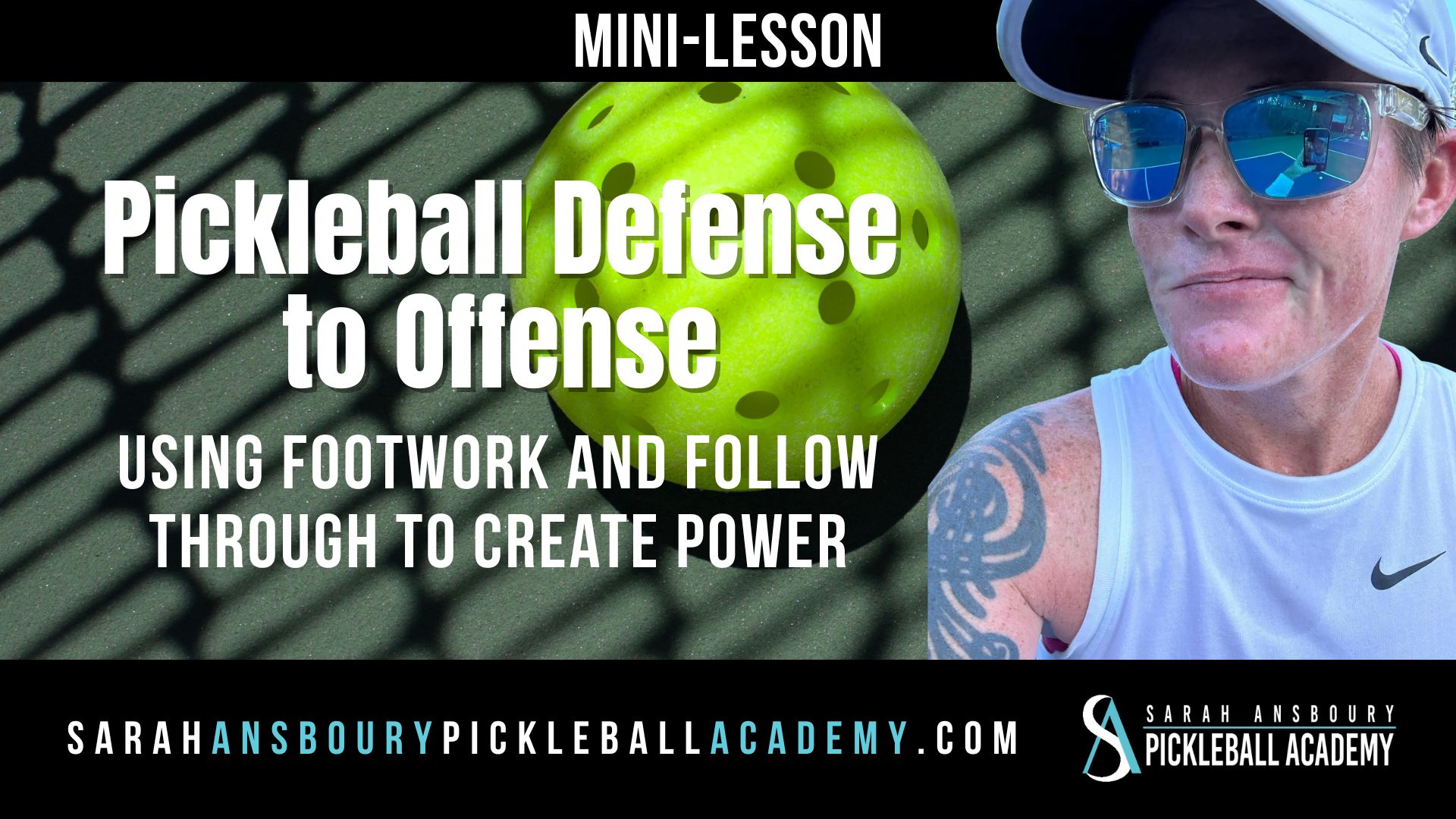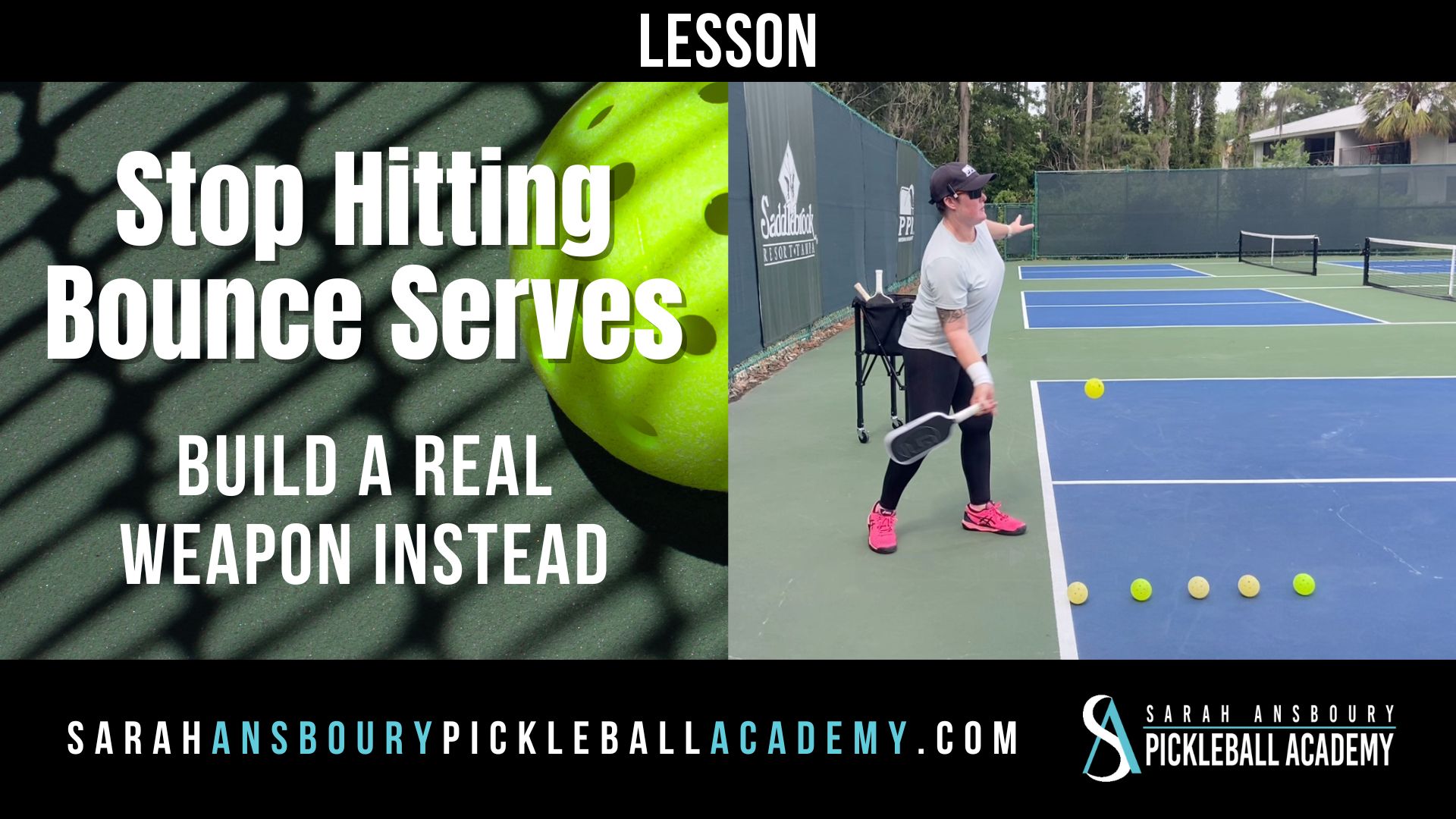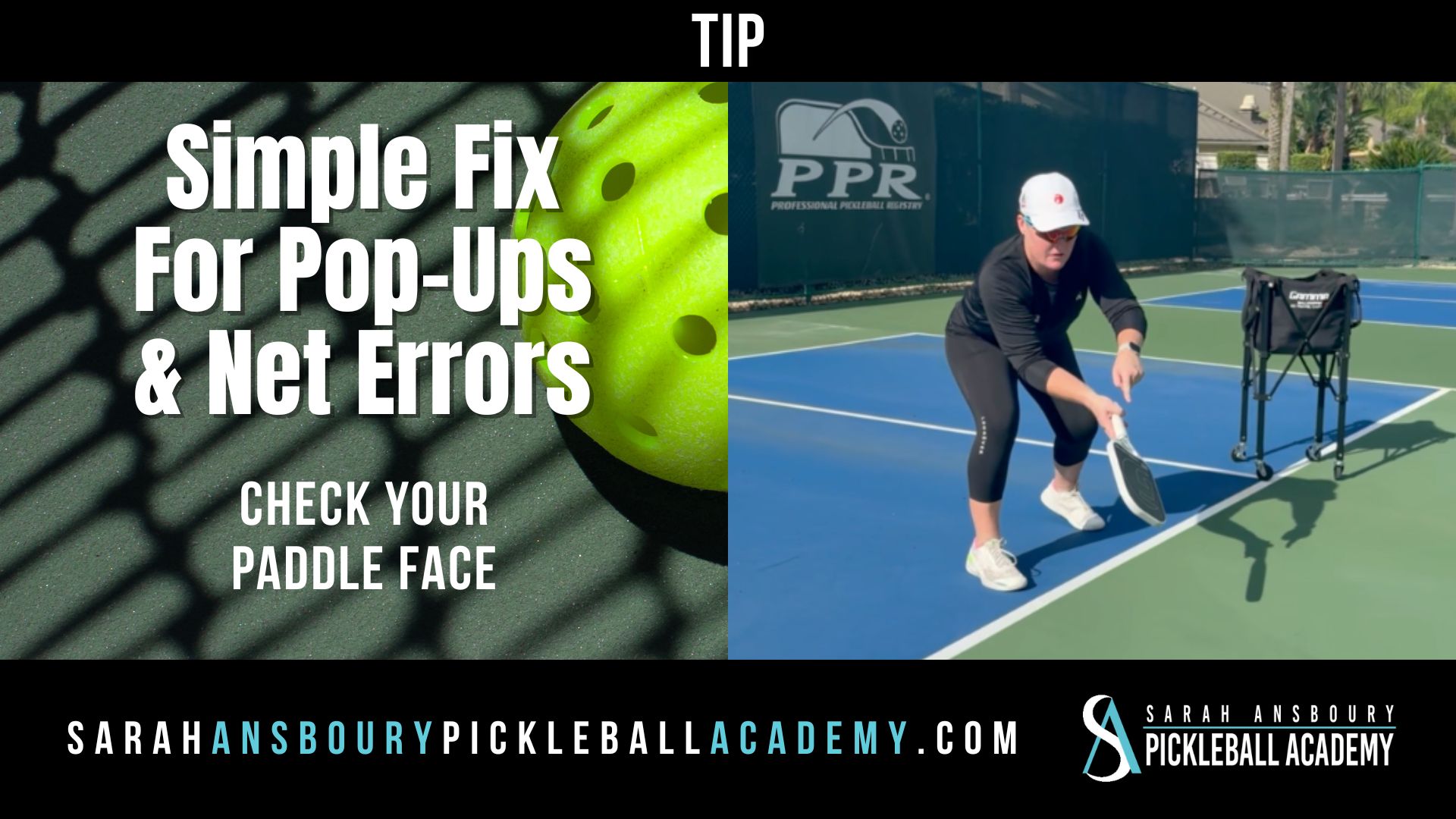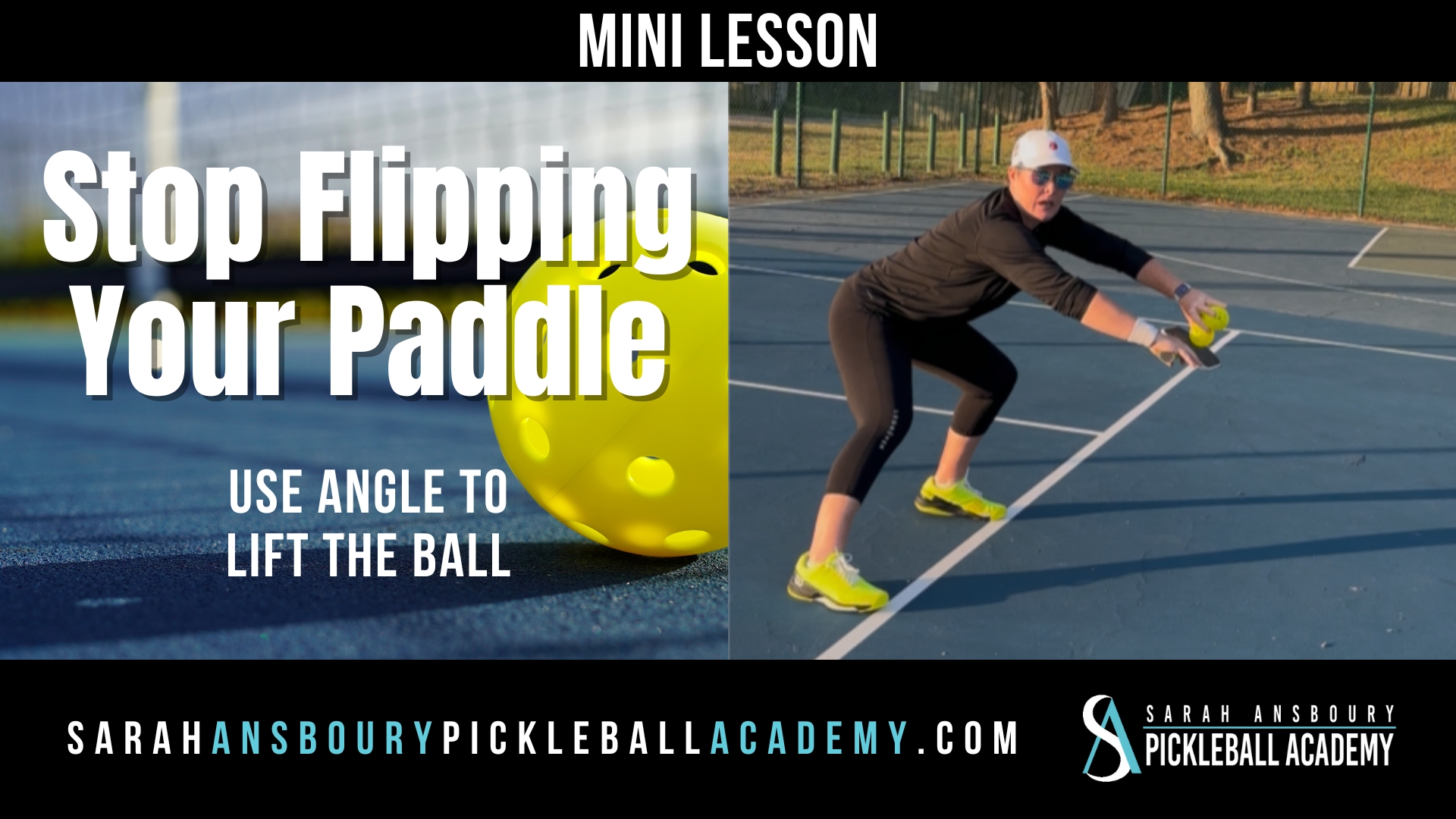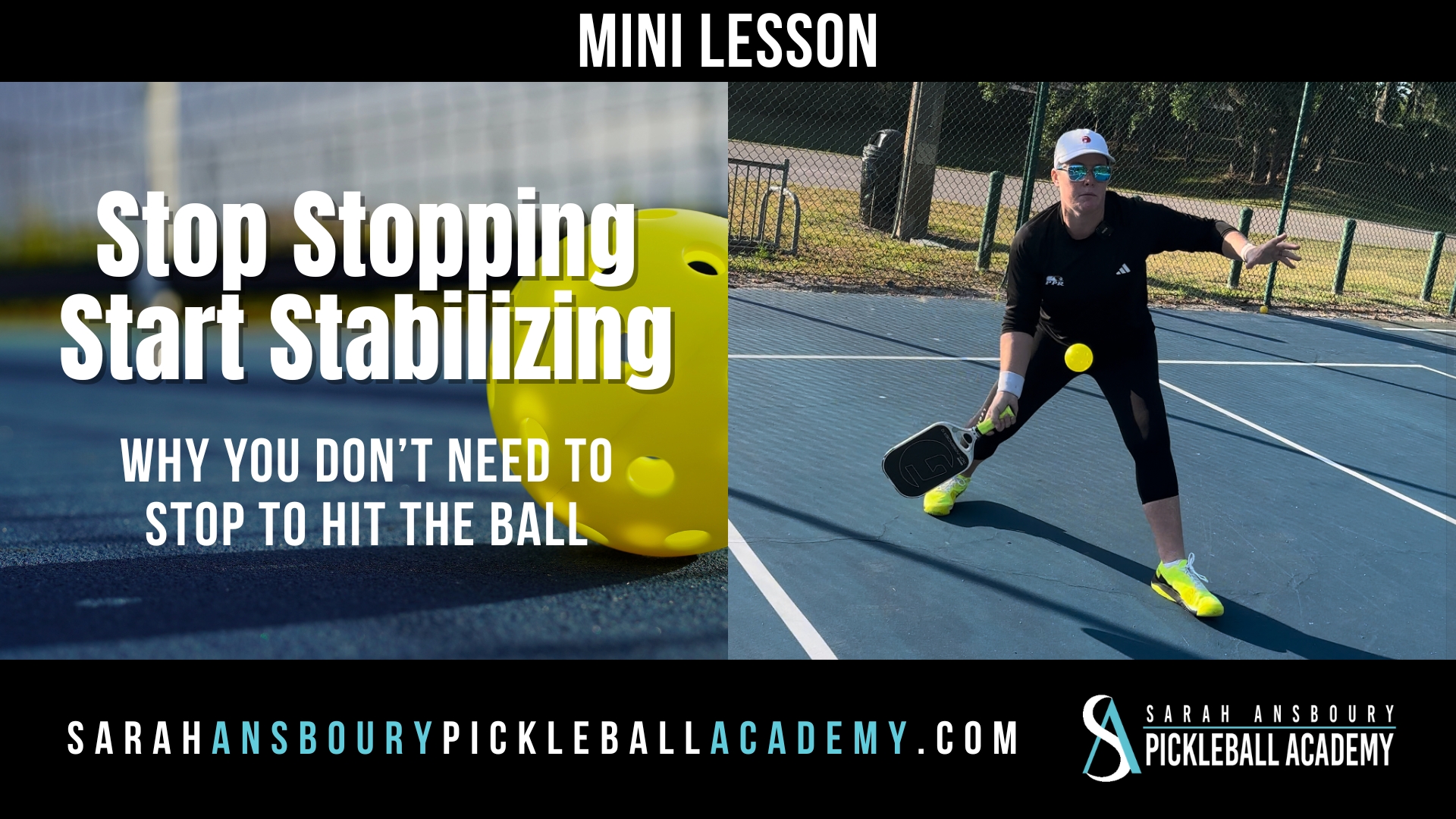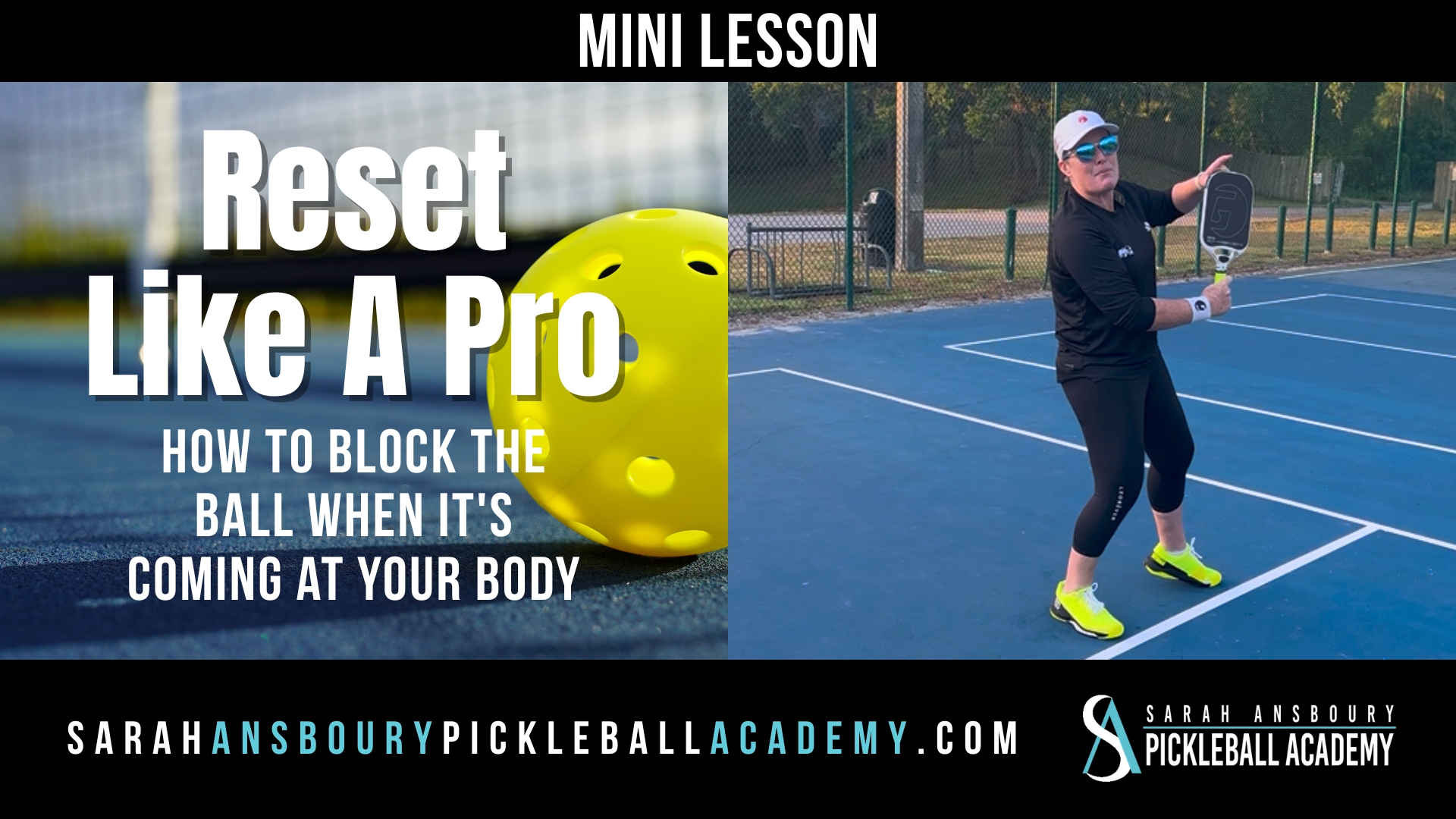I think of pickleball as a marathon. You can’t sprint for 26 miles. My question for many of my students is, “What’s your hurry?”
Common problem
I have written about this before, but the fact is that the tendency to move too much and too fast is a common problem. I find that players focus on “gotta get the ball” rather than “what I want to do with the ball”. I see players sacrificing balance and stability on the court in their rush to get to the ball and then seem surprised by where the ball goes. Instead, I want your focus to be where you intend to hit the ball as you move to it while maintaining body control.
How fast is too fast
 I always want the court in front of me, the paddle in front of me and the ball in front of me. I want to be able to see all of the court, so I can clearly identify my target. If I am unable to do all of these things…I am moving too fast.
I always want the court in front of me, the paddle in front of me and the ball in front of me. I want to be able to see all of the court, so I can clearly identify my target. If I am unable to do all of these things…I am moving too fast.
One of the reasons so many players struggle with this concept is that they move too much. When we are moving too much, our head tends to bob and move about too much. This makes it difficult to use our peripheral vision. By keeping your head stable, and moving less, you are better able to watch the ball.
Only a few feet
From the baseline to the NVZ line is 15 feet. For me, that is no more than 7 steps. Moving at a steady pace, not too fast…but also not stopping, I am able to get to the NVZ line within one or 2 shots. If I maintain a steady pace I can accelerate or decelerate when needed. I can control my paddle, so it remains in front of me at all time. Remember the tortoise and the hare. You don’t need to sprint to the NVZ line to win the race (or match).
Likewise, the distance from sideline to sideline is only 20 feet. You and your partner need to each cover 10 feet. While players are often told to maintain a consistent distance between you and your partner…this does not mean that you both need to be shuffling from side to side like marionettes tied together by a string. If you are constantly in motion it is likely you will not be in balance when the ball comes to you. Again, what is your hurry? Focus on moving slower so you can remain in balance and have the ability to transfer your weight into the ball.
conserve your energy
I will often go out and play with people and they are drenched in sweat within the first few games. Meanwhile, I’m just getting started. By being more efficient on the court I conserve my energy, allowing me to play longer, see the ball, cut off the angles and accelerate when I need to.
I realize it is easier said than done. But the next time your play, ask yourself “what is your hurry’? Only by recognizing this all too common tendency can you correct it.


